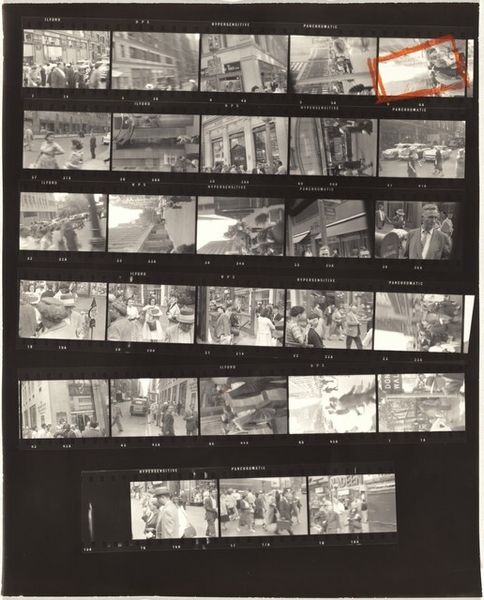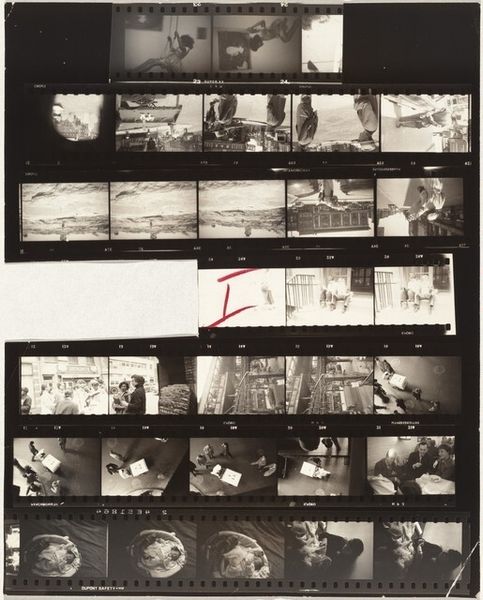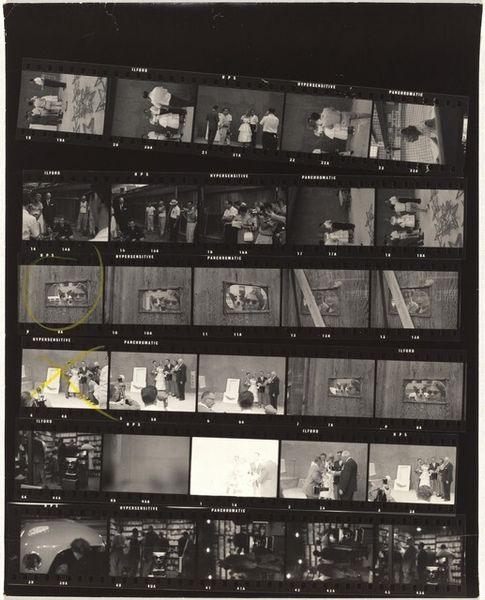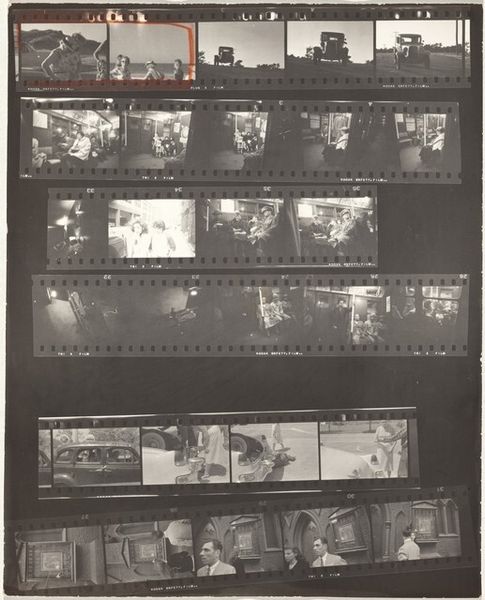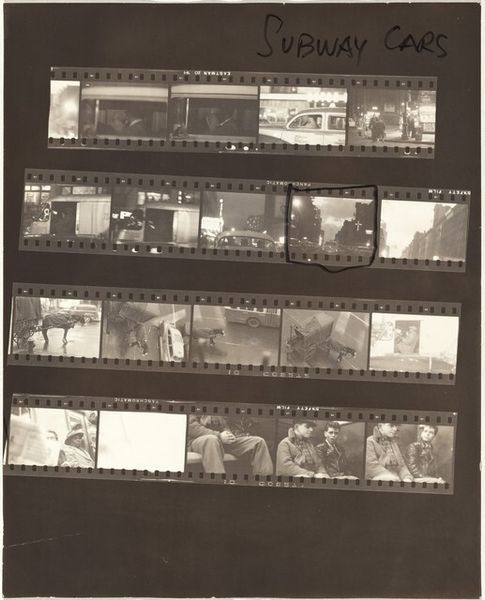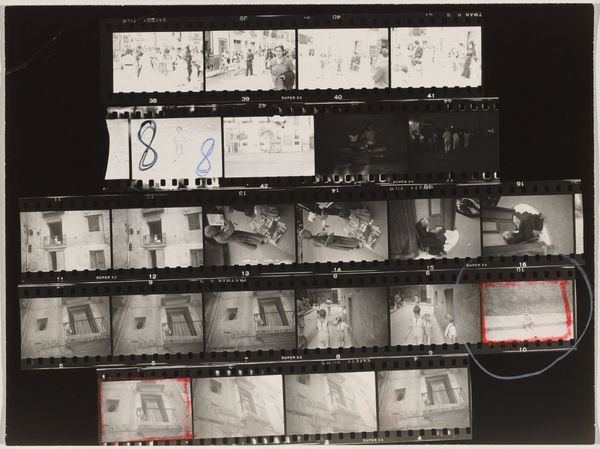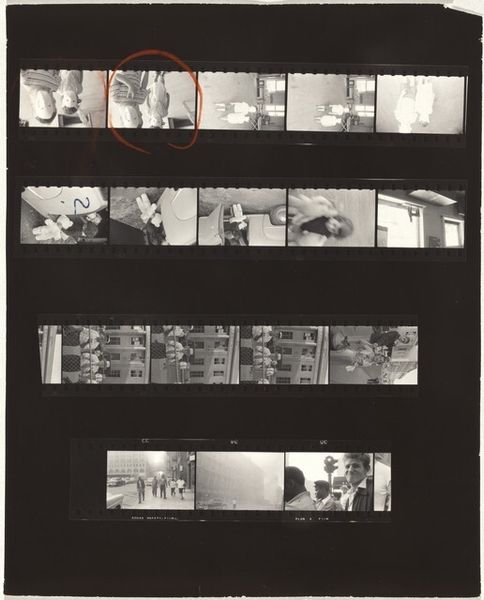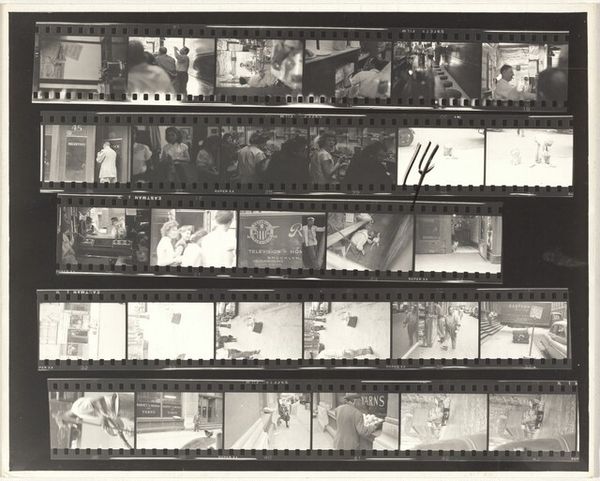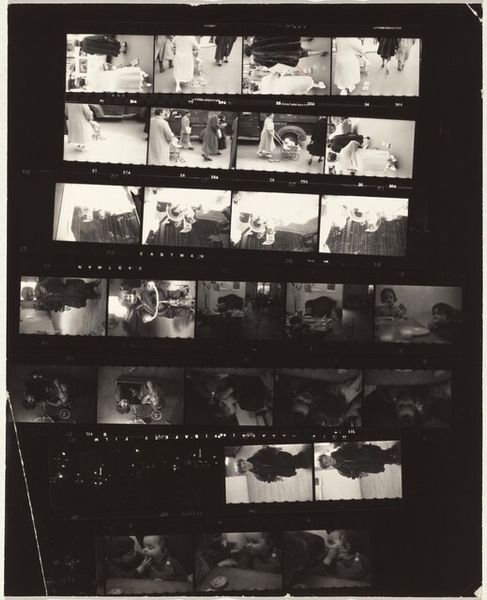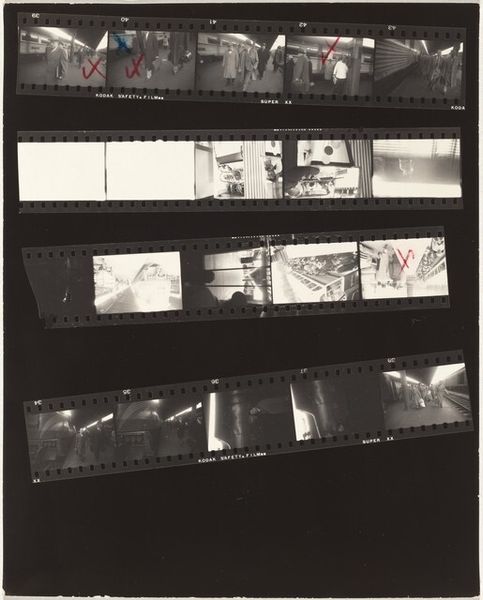
photography, gelatin-silver-print
#
film photography
#
archive photography
#
street-photography
#
photography
#
historical photography
#
gelatin-silver-print
#
monochrome photography
#
film
#
realism
#
monochrome
Dimensions: overall: 22.2 x 24.8 cm (8 3/4 x 9 3/4 in.)
Copyright: National Gallery of Art: CC0 1.0
Editor: We're looking at Robert Frank’s “Andraitx, Spain 8” from 1952, a gelatin silver print depicting what appears to be a filmstrip of street scenes. The monochrome and stark contrasts give the images an almost haunting feel. What jumps out to you when you see this, especially considering the choice of depicting a filmstrip itself? Curator: The filmstrip is crucial; it becomes a potent symbol. It signifies memory, time, and a fragmented narrative. Each frame encapsulates a moment, a tiny window into a reality that, when viewed together, evokes a cultural memory. The streets of Andraitx, captured in monochrome, become archetypal, evoking universal feelings of displacement, isolation, but also a stark, unsentimental beauty. What kind of psychological impact does that kind of fragmentation have for you? Editor: It definitely gives a sense of unease. You're seeing snippets, never the full picture. There's also a self-referential aspect; it is a picture of picture taking. Does that commentary enhance the experience for you? Curator: Absolutely. The photographic process itself becomes a subject. Frank isn’t just showing us Andraitx; he’s showing us how we see, how we remember, how photographic images shape our understanding of places and people. Notice how the dark borders between frames amplify the feeling of separation, yet they are held together in this cultural tapestry. Do you feel a sense of voyeurism looking at this contact sheet? Editor: A little bit, yeah! Like we're looking over the photographer's shoulder, seeing their selection process, their perspective… Curator: Exactly. It makes us question the photographer's role as an interpreter and how they choose to represent a specific culture. We are experiencing this not just through Frank’s eye, but are invited into his process and that amplifies its impact. Editor: That's a fantastic point. Seeing the selection highlights how a narrative can be constructed, manipulated, or perhaps more kindly curated. I didn't see it that way initially. Curator: Photography can do that; make us question our immediate interpretation. And film photography is particularly good at revealing these latent emotions and meanings.
Comments
No comments
Be the first to comment and join the conversation on the ultimate creative platform.
